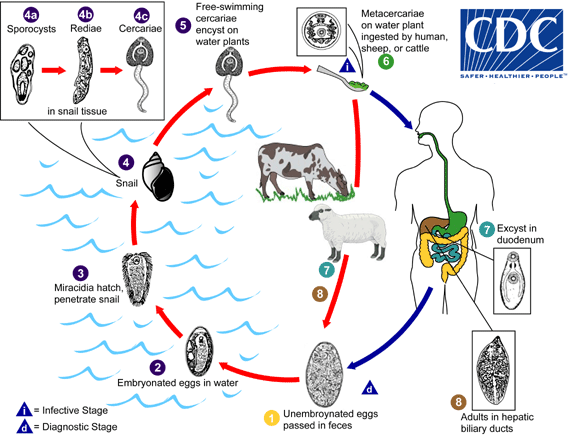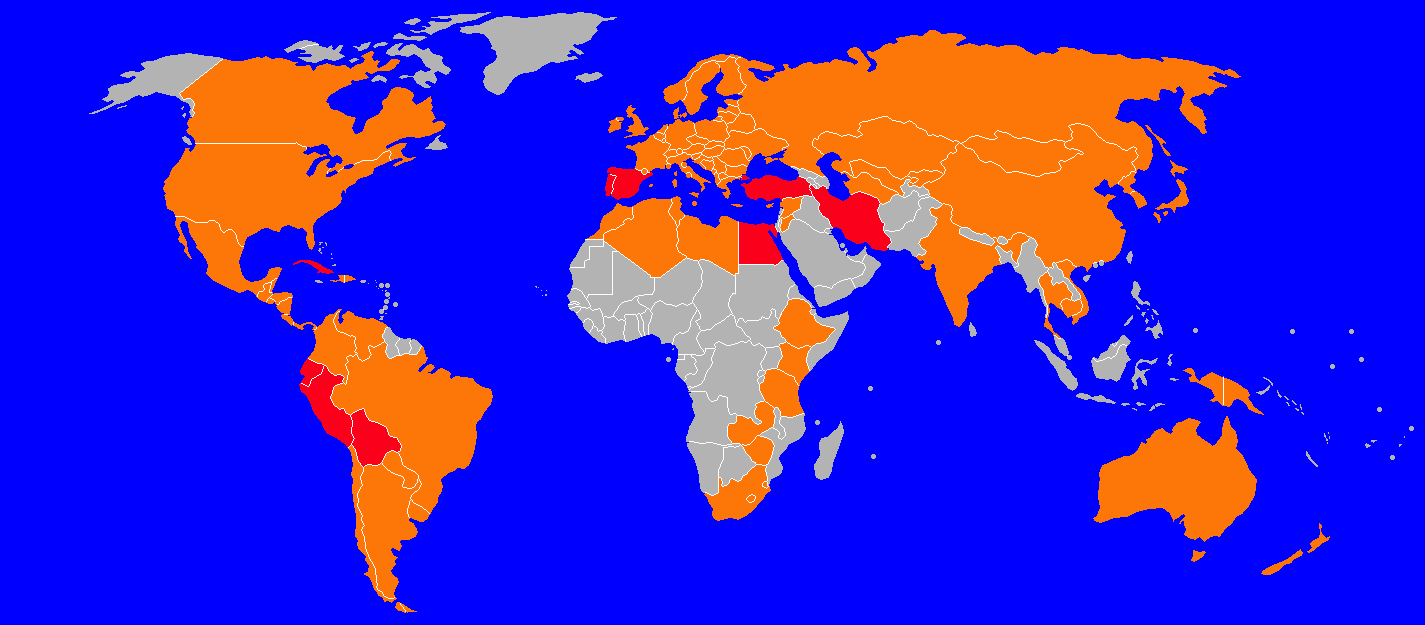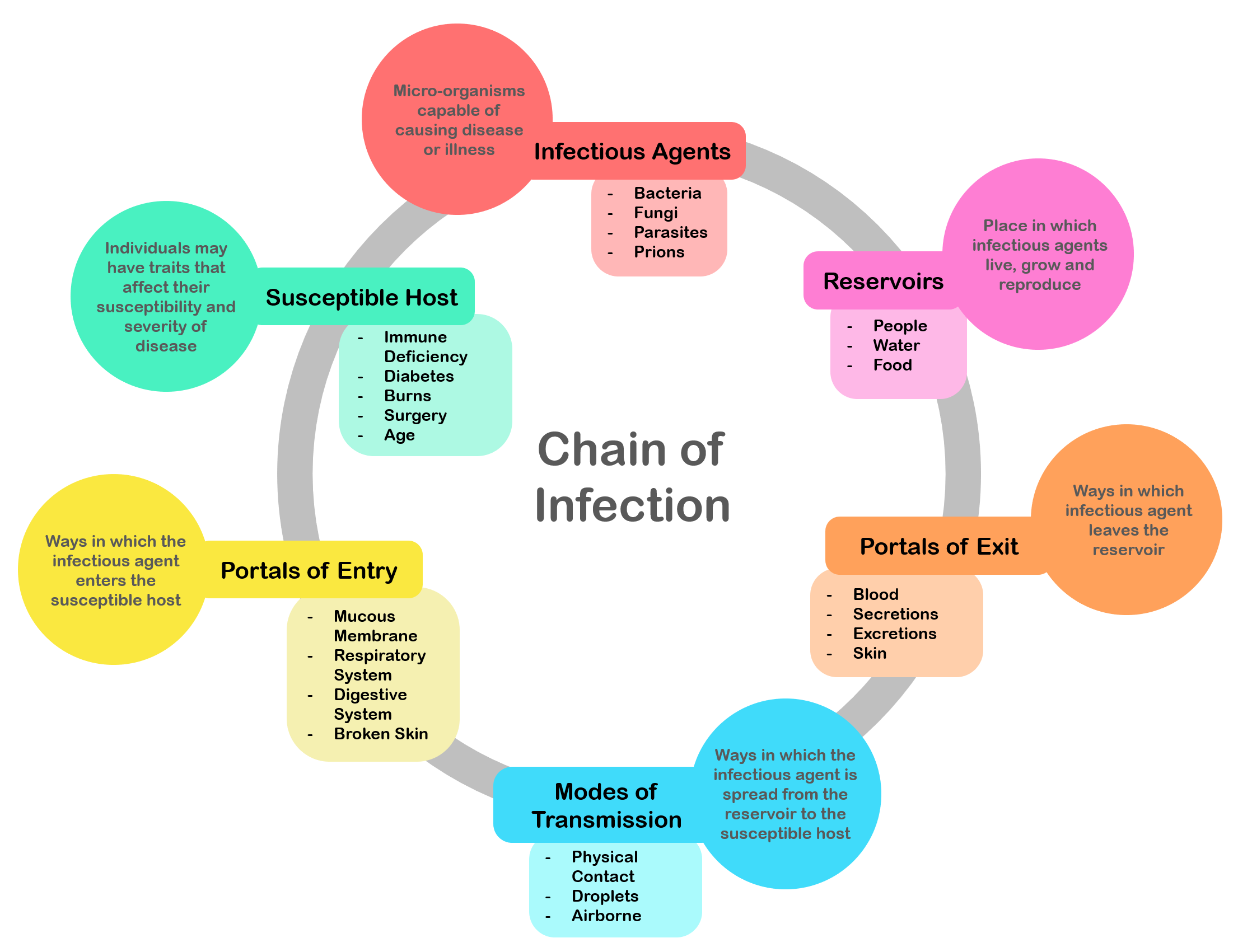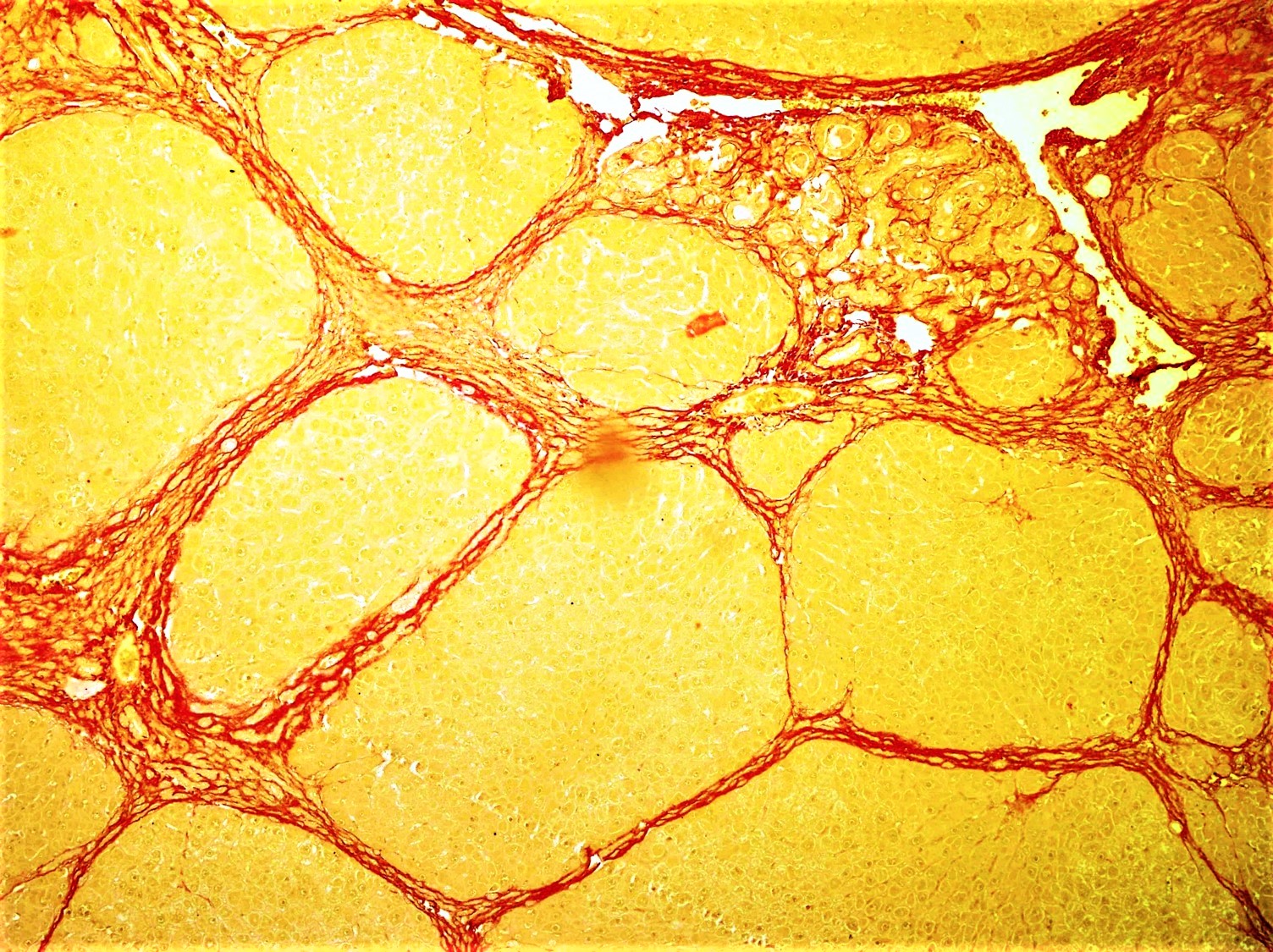|
Fasciolosis
Fasciolosis is a parasitic worm infection caused by the common liver fluke ''Fasciola hepatica'' as well as by '' Fasciola gigantica''. The disease is a plant-borne trematode zoonosis, and is classified as a neglected tropical disease (NTD). It affects humans, but its main host is ruminants such as cattle and sheep. The disease progresses through four distinct phases; an initial incubation phase of between a few days up to three months with little or no symptoms; an invasive or acute phase which may manifest with: fever, malaise, abdominal pain, gastrointestinal symptoms, urticaria, anemia, jaundice, and respiratory symptoms. The disease later progresses to a latent phase with less symptoms and ultimately into a chronic or obstructive phase months to years later. In the chronic state the disease causes inflammation of the bile ducts, gall bladder and may cause gall stones as well as fibrosis. While chronic inflammation is connected to increased cancer rates, it is unclear whethe ... [...More Info...] [...Related Items...] OR: [Wikipedia] [Google] [Baidu] |
Fasciola Hepatica
''Fasciola hepatica'', also known as the common liver fluke or sheep liver fluke, is a parasitism, parasitic trematode (fluke or flatworm, a type of helminth) of the class (biology), class Trematoda, phylum Platyhelminthes. It infects the livers of various mammals, including humans, and is transmitted by sheep and cattle to humans the world over. The disease caused by the fluke (flatworm), fluke is called fasciolosis or fascioliasis, which is a type of helminthiasis and has been classified as a neglected tropical disease. Fasciolosis is currently classified as a plant/food-borne trematode infection, often acquired through eating the parasite's Trematode life cycle stages, metacercariae encysted on plants. ''F. hepatica'', which is distributed worldwide, has been known as an important parasite of sheep and cattle for decades and causes significant economic losses in these livestock species, up to £23 million in the UK alone. Because of its relatively large size and economic impor ... [...More Info...] [...Related Items...] OR: [Wikipedia] [Google] [Baidu] |
Fasciola
''Fasciola'', commonly known as the liver fluke, is a genus of parasitic trematodes. There are two species within the genus ''Fasciola'': ''Fasciola'' ''hepatica'' and ''Fasciola'' ''gigantica'', as well as hybrids between the two species. Both species infect the liver tissue of a wide variety of mammals, including humans, in a condition known as fascioliasis. ''F. hepatica'' measures up to 30 mm by 15 mm, while ''F. gigantica'' measures up to 75 mm by 15 mm. Species *''Fasciola hepatica'' Linnaeus, 1758 *'' Fasciola gigantica'' Cobbold, 1855Cobbold, T. S. (1855). Description of a new trematode worm (''Fasciola gigantica''). ''The Edinburgh New Philosophical Journal, Exhibiting a View of the Progressive Discoveries and Improvements in the Sciences and the Arts. New Series'', II, 262–267. * Hybrid or introgressed populations of ''Fasciola gigantica'' × ''Fasciola hepatica'' Life cycle ''Fasciola'' pass through five phases in their life cycle: egg, mira ... [...More Info...] [...Related Items...] OR: [Wikipedia] [Google] [Baidu] |
Fasciola Gigantica
''Fasciola gigantica'' is a parasitic flatworm of the class Trematoda, which causes tropical fascioliasis. It is regarded as one of the most important single platyhelminth infections of ruminants in Asia and Africa. Estimates of infection rates are as high as 80–100% in some countries. The infection is commonly called fasciolosis. The prevalence of ''F. gigantica'' often overlaps with that of '' Fasciola hepatica'', and the two species are so closely related in terms of genetics, behaviour, and morphological and anatomical structures that distinguishing them is notoriously difficult. Therefore, sophisticated molecular techniques are required to correctly identify and diagnose the infection. Distribution ''Fasciola gigantica'' causes outbreaks in tropical areas of South Asia, Southeast Asia, and Africa. The geographical distribution of ''F. gigantica'' overlaps with ''F. hepatica'' in many African and Asian countries and sometimes in the same country, although in s ... [...More Info...] [...Related Items...] OR: [Wikipedia] [Google] [Baidu] |
Zoonosis
A zoonosis (; plural zoonoses) or zoonotic disease is an infectious disease of humans caused by a pathogen (an infectious agent, such as a bacterium, virus, parasite or prion) that has jumped from a non-human (usually a vertebrate) to a human. Typically, the first infected human transmits the infectious agent to at least one other human, who, in turn, infects others. Major modern diseases such as Ebola virus disease and salmonellosis are zoonoses. HIV was a zoonotic disease transmitted to humans in the early part of the 20th century, though it has now evolved into a separate human-only disease. Most strains of influenza that infect humans are human diseases, although many strains of bird flu and swine flu are zoonoses; these viruses occasionally recombine with human strains of the flu and can cause pandemics such as the 1918 Spanish flu or the 2009 swine flu. ''Taenia solium'' infection is one of the neglected tropical diseases with public health and veterinary concern in ... [...More Info...] [...Related Items...] OR: [Wikipedia] [Google] [Baidu] |
Fasciolopsis
''Fasciolopsis'' () is a genus of trematodes. They are also known as giant intestinal flukes. Only one species is recognised: ''Fasciolopsis buski''. It is a notable parasite of medical importance in humans and veterinary importance in pigs. It is prevalent in Southern and Eastern Asia. The term for infestation with ''Fasciolopsis'' is fasciolopsiasis. ''Fasciolopsis buski'' ''Fasciolopsis buski'' is commonly called the giant intestinal fluke, because it is an exceptionally large parasitic fluke, and the largest known to parasitise humans. Its size is variable and a mature specimen might be as little as 2 cm long, but the body may grow to a length of 7.5 cm and a width of 2.5 cm. It is a common parasite of humans and pigs and is most prevalent in Southern and Southeastern Asia. It is a member of the family Fasciolidae in the order Plagiorchiida. The Echinostomida are members of the class Trematoda, the flukes. The fluke differs from most species that paras ... [...More Info...] [...Related Items...] OR: [Wikipedia] [Google] [Baidu] |
Infectious Disease
An infection is the invasion of tissues by pathogens, their multiplication, and the reaction of host tissues to the infectious agent and the toxins they produce. An infectious disease, also known as a transmissible disease or communicable disease, is an illness resulting from an infection. Infections can be caused by a wide range of pathogens, most prominently bacteria and viruses. Hosts can fight infections using their immune system. Mammalian hosts react to infections with an innate response, often involving inflammation, followed by an adaptive response. Specific medications used to treat infections include antibiotics, antivirals, antifungals, antiprotozoals, and antihelminthics. Infectious diseases resulted in 9.2 million deaths in 2013 (about 17% of all deaths). The branch of medicine that focuses on infections is referred to as infectious disease. Types Infections are caused by infectious agents ( pathogens) including: * Bacteria (e.g. ''Mycobacterium ... [...More Info...] [...Related Items...] OR: [Wikipedia] [Google] [Baidu] |
Fibrosis
Fibrosis, also known as fibrotic scarring, is a pathological wound healing in which connective tissue replaces normal parenchymal tissue to the extent that it goes unchecked, leading to considerable tissue remodelling and the formation of permanent scar tissue. Repeated injuries, chronic inflammation and repair are susceptible to fibrosis where an accidental excessive accumulation of extracellular matrix components, such as the collagen is produced by fibroblasts, leading to the formation of a permanent fibrotic scar. In response to injury, this is called scarring, and if fibrosis arises from a single cell line, this is called a fibroma. Physiologically, fibrosis acts to deposit connective tissue, which can interfere with or totally inhibit the normal architecture and function of the underlying organ or tissue. Fibrosis can be used to describe the pathological state of excess deposition of fibrous tissue, as well as the process of connective tissue deposition in healing. Define ... [...More Info...] [...Related Items...] OR: [Wikipedia] [Google] [Baidu] |
Laparotomy
A laparotomy is a surgical procedure involving a surgical incision through the abdominal wall to gain access into the abdominal cavity. It is also known as a celiotomy. Origins and history The first successful laparotomy was performed without anesthesia by Ephraim McDowell in 1809 in Danville, Kentucky. On July 13, 1881, George E. Goodfellow treated a miner outside Tombstone, Arizona Territory, who had been shot in the abdomen with a .32-caliber Colt revolver. Goodfellow was able to operate on the man nine days after he was shot, when he performed the first laparotomy to treat a bullet wound. Terminology The term comes from the Greek word λᾰπάρᾱ (lapara) 'the soft part of the body between the ribs and hip, flank' and the suffix ''-tomy'', from the Greek word τομή (tome) '(surgical) cut'. In diagnostic laparotomy (most often referred to as an exploratory laparotomy and abbreviated ex-lap), the nature of the disease is unknown, and laparotomy is deemed the bes ... [...More Info...] [...Related Items...] OR: [Wikipedia] [Google] [Baidu] |
Echinostoma
''Echinostoma'' is a genus of trematodes (flukes), which can infect both humans and other animals. These intestinal flukes have a three-host life cycle with snails or other aquatic organisms as intermediate hosts, and a variety of animals, including humans, as their definitive hosts. ''Echinostoma'' infect the gastrointestinal tract of humans, and can cause a disease known as echinostomiasis. The parasites are spread when humans or animals eat infected raw or undercooked food, such as bivalve molluscs or fish. Taxonomy There has been debate about the number of species in this group, with estimates as high as 120 unique species of ''Echinostoma'', however, currently 16 species have been accepted as valid species with another 10 to be validated ''Echinostoma'' are difficult to classify based on morphology alone. Many species look alike and can be considered cryptic species (different lineages are considered to be the same species, due to high morphological similarity between t ... [...More Info...] [...Related Items...] OR: [Wikipedia] [Google] [Baidu] |
Hepatobiliary Diseases
Hepato-biliary diseases include liver diseases and biliary diseases. Their study is known as hepatology. Liver diseases Viral hepatitis * Acute hepatitis A * Acute hepatitis B * Acute hepatitis C * Acute hepatitis D – this is a superinfection with the delta-agent in a patient already infected with hepatitis B * Acute hepatitis E * Chronic viral hepatitis * Other viral hepatitis viruses may exist but their relation to the disease is not firmly established like the previous ones ( hepatitis F, GB virus C, hepatitis X) Other infectious diseases * Hepatitis: ** cytomegalovirus infection ** herpesviral: herpes simplex infection * Toxoplasmosis * Hepatosplenic schistosomiasis * Portal hypertension in schistosomiasis * Liver disease in syphilis * Epstein–Barr virus infection * yellow fever virus infection * rubella virus infection * leptospirosis * Echinococcosis * Amoebiasis Other inflammatory diseases * liver abscess * autoimmune hepatitis * primary biliary cholangitis (primary b ... [...More Info...] [...Related Items...] OR: [Wikipedia] [Google] [Baidu] |
Cholecystitis
Cholecystitis is inflammation of the gallbladder. Symptoms include right upper abdominal pain, pain in the right shoulder, nausea, vomiting, and occasionally fever. Often gallbladder attacks (biliary colic) precede acute cholecystitis. The pain lasts longer in cholecystitis than in a typical gallbladder attack. Without appropriate treatment, recurrent episodes of cholecystitis are common. Complications of acute cholecystitis include gallstone pancreatitis, common bile duct stones, or inflammation of the common bile duct. More than 90% of the time acute cholecystitis is caused from blockage of the cystic duct by a gallstone. Risk factors for gallstones include birth control pills, pregnancy, a family history of gallstones, obesity, diabetes, liver disease, or rapid weight loss. Occasionally, acute cholecystitis occurs as a result of vasculitis or chemotherapy, or during recovery from major trauma or burns. Cholecystitis is suspected based on symptoms and laboratory testing. Abdom ... [...More Info...] [...Related Items...] OR: [Wikipedia] [Google] [Baidu] |
Triclabendazole
Triclabendazole, sold under the brand name Egaten among others, is a medication used to treat fascioliasis and paragonimiasis. It is very effective for both conditions. Treatment in hospital may be required. It is taken by mouth with typically one or two doses being required. Side effects are generally few, but can include abdominal pain and headaches. Biliary colic may occur due to dying worms. While no harm has been found with use during pregnancy, triclabendazole has not been studied well in this population. It is a member of the benzimidazole family of medications for worms. Triclabendazole was approved for medical use in the United States in 2019. It is on the World Health Organization's List of Essential Medicines. For human use, it can be obtained from the World Health Organization. It is also used in animals. Chemistry It is a member of the benzimidazole family of anthelmintics. The benzimidazole drugs share a common molecular structure, triclabendazole being ... [...More Info...] [...Related Items...] OR: [Wikipedia] [Google] [Baidu] |








